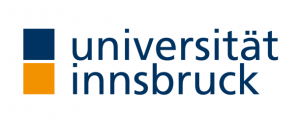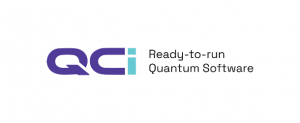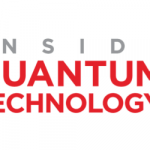Quantum News Briefs February 6: US and India expand “Initiative on Critical & Emerging Technology” to expand partnerships and decrease influence of China; Researchers entangle ions across a 230-meter quantum network; Quantum Exponential invests in Oxford Quantum Circuits + MORE

Quantum News Briefs February 6: US and India expand “Initiative on Critical & Emerging Technology” to expand partnerships and decrease influence of China; Researchers entangle ions across a 230-meter quantum network; Quantum Exponential invests in Oxford Quantum Circuits + MORE.
US and India expand “Initiative on Critical & Emerging Technology” to expand partnerships and decrease influence of China

Oliver Peckham is the author of a recent article describing a recent meeting of the “Initiative on Critical and Emerging Technology” (iCET)effort, aimed at expanding US and India’s partnerships in strategic technologies and defense industries across the public and private sectors. Quantum News Briefs summarizes Peckham’s February 2 article below.
iCET met for the first time last week at the White House, with the countries – led by their respective National Security Advisors – agreeing to launch a series of bilateral initiatives and to “welcome new cooperation” to expand their technology partnerships across a number of areas. Among these the bullet points: increased collaboration on high-performance computing.
The U.S. and India further agreed to sign a new implementation agreement for a partnership between the National Science Foundation and analogous Indian scientific agencies; that partnership will cover areas like AI and quantum technologies.
The countries will also establish a joint Quantum Coordination Mechanism that includes industry, government and academic representatives; they will further work to “develop common standards and benchmarks for trustworthy AI,” the White House fact sheet reads, “ensuring that these standards and benchmarks are aligned with democratic values.”
The ambitious iCET meeting outcomes reflect an increased U.S. push toward “friendshoring,” a middle ground between onshoring and offshoring that describes the cultivation of critical industries in friendly countries. The overarching context of the iCET meeting, of course, is clear: increasing Western concern over reliance on China-based factories and industries.
According to the White House, the next iCET meeting will be held in New Delhi later this year. Click here to read the article in-entirety.
Researchers entangle ions across a 230-meter quantum network
 Teams led by Tracy Northup and Ben Lanyon from the University of Innsbruck have entangled two ions over a distance of 230 meters. Trapped ions have previously only been entangled in one and the same laboratory. Quantum News Briefs summarizes from Phys.org.
Teams led by Tracy Northup and Ben Lanyon from the University of Innsbruck have entangled two ions over a distance of 230 meters. Trapped ions have previously only been entangled in one and the same laboratory. Quantum News Briefs summarizes from Phys.org.
The nodes of this network were housed in two labs at the Campus Technik to the west of Innsbruck, Austria. The experiment shows that trapped ions are a promising platform for future quantum networks that span cities and eventually continents.
Researchers led by Northup and Lanyon at the University of Innsbruck’s Department of Experimental Physics have developed a method for doing this by trapping atoms in optical cavities such that quantum information can be efficiently transferred to light particles. The light particles can then be sent through optical fibers to connect atoms at different locations.
Now, their teams, together with theorists led by Nicolas Sangouard of the Université Paris-Saclay, have for the first time entangled two trapped ions more than a few meters apart.
The Innsbruck physicists have now managed to entangle two ions across campus. “To do this, we sent individual photons entangled with the ions over a 500-meter fiber optic cable and superimposed them on each other, swapping the entanglement to the two remote ions,” says Northup, describing the experiment. “Our results show that trapped ions are a promising platform for realizing future distributed networks of quantum computers, quantum sensors and atomic clocks.”
Lanyon’s and Northup’s teams are part of the Quantum Internet Alliance, one of the organizers of the upcoming IQT The Hague March 13-15.
IQT The Hague, Europe’s Quantum Communications & Quantum Security Event; March 13-15,
Quantum Exponential invests in Oxford Quantum Circuits
 Quantum Exponential Group plc, a company focused on investing in quantum technology announced February 3 that it has invested £299,997 (US$363,675) as part of a c.£869,000 (c.US$1,053,454) second funding round in Oxford Quantum Circuits (OQC), one of Europe’s leading quantum companies. Quantum News Briefs summarizes announcement from HPCWire.
Quantum Exponential Group plc, a company focused on investing in quantum technology announced February 3 that it has invested £299,997 (US$363,675) as part of a c.£869,000 (c.US$1,053,454) second funding round in Oxford Quantum Circuits (OQC), one of Europe’s leading quantum companies. Quantum News Briefs summarizes announcement from HPCWire.
Other participants in the fundraise include the Japanese private equity firm HiJoJo Partners. This is Quantum Exponential’s sixth portfolio investment.
Proceeds from the Funding will be used for research and development and to accelerate OQC’s expansion into Asia Pacific, with a focus on Japan, where there is significant demand for quantum computers across multiple sectors, including financial services and pharmaceuticals.
Highlights:
- OQC is Quantum Exponential’s first investment in 2023.
- Proceeds of the fundraise will be used for R&D and to accelerate OQC’s expansion into Asia Pacific.
- OQC became the first European company to feature in Amazon Web Services, making its computers available to millions of users.
- In 2022, OQC raised £38 million (US$46m)- the UK’s largest ever Series A raise in quantum computing.
- Blue chip investees, include HiJoJo Partners, Lansdowne Partners and The University of Tokyo Edge Capital Partners (“UTEC”).
OQC designs unique superconducting circuits, it successfully raised £38 million (US$46m) last year as part of a Series A fundraise, the UK’s largest ever Series A in quantum computing, co-led by Lansdowne Partners, one of Europe’s leading investment firms, and UTEC, Japan’s largest deeptech VC fund. Click here to read announcement in-entirety from HPCwire website.
Quantum Computing Inc. Appoints Technology Strategist James Simon to establish & lead Technical Advisory Board
 Quantum Computing Inc.has announced the appointment of James (Jim) Simon, Jr., a seasoned US intelligence community leader and technology strategist with extensive experience working with senior government and industry leaders globally, to establish and lead the Company’s Technical Advisory Board.
Quantum Computing Inc.has announced the appointment of James (Jim) Simon, Jr., a seasoned US intelligence community leader and technology strategist with extensive experience working with senior government and industry leaders globally, to establish and lead the Company’s Technical Advisory Board.
Mr. Simon is a former senior Central Intelligence Agency officer and former executive at Microsoft. He served as the first Assistant Director of the Central Intelligence for Administration (1998 – 2003) during which he oversaw the 14 agencies that comprised the National Foreign Intelligence Program. He chaired the Mission Requirements Board that approved all Intelligence Community’s major system acquisitions, and, after September 11th, was designated as the senior intelligence officer for homeland security where he established and chaired the Homeland Security Intelligence Council. For his government service, Mr. Simon has received numerous awards, including the Distinguished Intelligence Medal, attaining the highest possible grade for a career intelligence officer. Returning to the private sector, Mr. Simon launched a consulting and services firm and soon thereafter joined Microsoft as Director of its Institute for Advanced Technology in Governments, rising to Chief Strategist, World Wide Public Sector in 2010. Over the last 10 years, Mr. Simon has been advising businesses and governments worldwide on advanced cyber security technologies, the development of advanced analytics and comprehensive solutions, and strategic initiatives, as well as, providing training and education to military colleges and civilian universities.
Over the last 10 years, Mr. Simon has been advising businesses and governments worldwide on advanced cyber security technologies, the development of advanced analytics and comprehensive solutions, and strategic initiatives, as well as, providing training and education to military colleges and civilian universities.
Sandra K. Helsel, Ph.D. has been researching and reporting on frontier technologies since 1990. She has her Ph.D. from the University of Arizona.



















